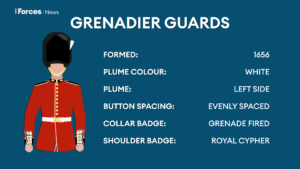Brazilian Jiu-Jitsu (BJJ) is renowned for its intricate techniques and strategic depth. Among its many aspects, the guard is one of the most critical positions, serving as both a defensive and offensive tool. Whether you are a beginner or an advanced practitioner, mastering your guard can significantly enhance your game. In this article, we will explore effective tips and drills to help you improve your BJJ guard in 2024. Let’s dive in!
1. Understand the Different Types of Guards

The BJJ guard is a versatile position with numerous variations, each with its unique advantages. Here are some essential types of guards to focus on:
- Closed Guard: A foundational guard where your legs are wrapped around your opponent’s waist, providing control and submission opportunities.
- Spider Guard: Utilizing your feet to grip your opponent’s sleeves or collar, allowing for dynamic sweeps and submissions.
- De La Riva Guard: A hook placed on the outside of your opponent’s leg, offering excellent sweeping and sweeping opportunities.
- Half Guard: A transitional guard that allows for sweeps, submissions, and escapes, typically involving one leg trapped between your opponent’s legs.
Tip: Dedicate time to exploring and mastering at least three different guards. Each guard has its strengths and applications, so versatility is key.
2. Focus on Grip Fighting
In BJJ, grip fighting is crucial for establishing control and setting up techniques from the guard. Here’s how to enhance your grip fighting skills:
- Develop Strong Hand Fighting Techniques: Practice breaking your opponent’s grips and establishing your own. Use drills that simulate real sparring scenarios to improve your grip strength and technique.
- Use Your Legs for Control: Your legs are powerful tools in grip fighting. Use them to maintain control over your opponent’s posture and movements.
Tip: Incorporate grip fighting drills into your warm-up routine. This practice will enhance your ability to control and manipulate your opponent’s grips effectively.
3. Drill Basic Guard Sweeps
Sweeps are essential for transitioning from the guard to a dominant position. Here are some fundamental sweeps to master:
- Scissor Sweep: Use your legs to scissor your opponent’s body, leveraging your hips to off-balance them.
- Hip Bump Sweep: Elevate your hips to bump your opponent off balance, allowing you to transition to a dominant position.
- Hook Sweep: Use your leg hook to sweep your opponent to the side, creating an opening for a pass or submission.
Tip: Practice these sweeps in a controlled environment, focusing on technique and timing. Repetition will help you execute them seamlessly during sparring.
4. Work on Your Guard Retention
Maintaining your guard against a more dominant opponent is a skill that requires practice and strategy. Here’s how to improve your guard retention:
- Use Frames Effectively: Establish frames with your arms and legs to create space and prevent your opponent from passing.
- Practice Guard Recovery Drills: Work on drills that simulate guard recovery from various positions, such as being flattened out or side-controlled.
Tip: Regularly spar with partners who focus on passing your guard. This will help you develop the instinctive reactions needed to maintain your guard under pressure.
5. Incorporate Submission Chains

A strong guard game isn’t just about sweeps; it’s also about setting up submissions. Building submission chains will make your guard more dangerous and unpredictable. Here’s how to develop effective submission chains:
- Start with Simple Submissions: Focus on basic submissions like the triangle choke, armbar, and omoplata. Practice chaining these submissions together seamlessly.
- Drill Transitions Between Submissions: Work on transitioning from one submission to another, maintaining control and pressure on your opponent.
Tip: Record your training sessions to analyze your submission chains. Look for areas where you can improve transitions and increase the fluidity of your attacks.
6. Improve Your Hip Movement
Effective hip movement is crucial for generating power and maintaining control in the guard. Here’s how to enhance your hip mobility and movement:
- Practice Hip Escapes and Shrimping: These techniques help you create space and escape from bad positions. Incorporate them into your warm-up and drilling routine.
- Incorporate Hip Mobility Exercises: Include exercises like hip circles, bridges, and hip flexor stretches to improve your range of motion.
Tip: Focus on smooth, fluid movements during drilling. The ability to move your hips effectively will enhance your guard control and sweeping techniques.
7. Use the Butterfly Guard
The butterfly guard is a versatile and effective guard position that offers numerous opportunities for sweeps and submissions. Here’s how to make the most of the butterfly guard:
- Focus on Your Feet Position: Keep your feet hooked under your opponent’s thighs, maintaining control and leverage.
- Practice Sweeps from Butterfly Guard: Work on sweeps like the butterfly sweep, hook sweep, and the single leg X sweep.
Tip: Regularly drill butterfly guard sweeps with a partner. Experiment with different grips and angles to find what works best for your style.
8. Strengthen Your Core
A strong core is essential for maintaining control and executing techniques from the guard. Here’s how to build core strength effectively:
- Incorporate Core Workouts: Include exercises like planks, leg raises, and Russian twists in your fitness routine.
- Use Core Drills in BJJ Training: Perform drills that emphasize core engagement, such as guard passing drills and shrimping exercises.
Tip: Focus on exercises that mimic BJJ movements, helping you build functional core strength that translates directly to your guard game.
9. Stay Relaxed and Maintain Your Breathing
Maintaining a relaxed mindset and proper breathing techniques are vital for a strong guard game. Here’s how to stay calm and focused:
- Practice Breathing Techniques: Use deep breathing exercises to stay relaxed and maintain focus during sparring.
- Stay Relaxed Under Pressure: Avoid tensing up during rolls. Keep your body loose and your mind calm to maintain effective guard control.
Tip: Incorporate mindfulness or meditation practices into your routine. This can enhance your mental resilience and help you stay calm under pressure.
10. Seek Feedback and Keep Learning

Continuous learning and feedback are key to improving your guard game. Here’s how to stay on track:
- Ask for Feedback from Higher Belts: Seek advice and tips from more experienced practitioners. Their insights can help you identify areas for improvement.
- Attend Seminars and Workshops: Participate in BJJ seminars and workshops to learn new techniques and gain different perspectives on the guard.
Tip: Keep a training journal to track your progress and document any feedback or new techniques you learn. This will help you stay organized and focused on your goals.
Conclusion
Improving your BJJ guard requires dedication, practice, and a willingness to learn. By focusing on these essential tips and drills, you can enhance your guard game and become a more effective and confident practitioner. Remember, progress in BJJ is a journey, and every step you take brings you closer to mastering this intricate art



